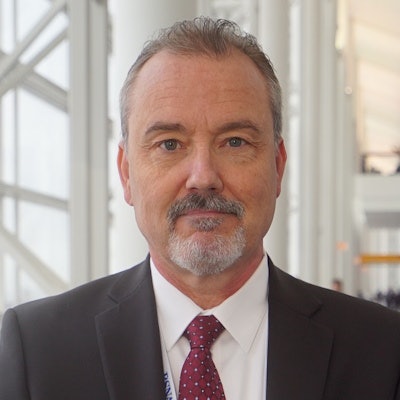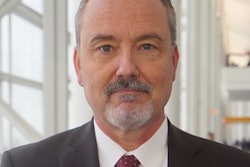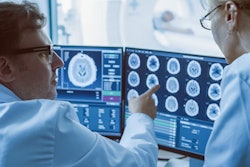
COVID-19 has momentously impacted the world in many ways. Concerns with safety and health are at the forefront of everyone's mind, and many are worried about the pandemic's impact on the economy. Healthcare in general is suffering, and imaging specifically has been decidedly obstructed as demand for nonemergent imaging has plummeted.
 Daniel Corbett of Radiology Business Solutions.
Daniel Corbett of Radiology Business Solutions.My firm, Radiology Business Solutions (RBS), provides professional management services and ongoing consulting for 11 private practices with close to 200 radiologists across the U.S. Like most private radiology practices, our groups experienced an average of 50% or more decline in volume during the initial phases of the pandemic.
As of this date, some locations, but not all, are emerging from the decline. There is genuine speculation as to what will happen with future volumes and radiologist staffing.
I recently read an article concerning the COVID-19 pandemic's effect on the field of radiology. The article speculated that radiologist recruitment for residency programs would be challenging for years to come due to a "protracted period of social distancing and shuttering of the economy," comparing this time to the 2008 market crash.
The article states, "Reasons for the radiology recruitment downturn in 2009 ... included uncertainty surrounding the specialty's business model after passage of the Affordable Care Act (ACA), Medicare cuts to imaging revenue, and the recession's impact on the radiology job market."
While the ACA and Medicare cuts certainly caused uncertainty in the field, it is not clear these worries meaningfully impacted medical students in choosing radiology residency paths. Beyond uncertainty, the overriding factor impacting radiology residency applications at the time was a lack of jobs.
The reduced radiology recruitment experienced in the 2009 financial recession is more likely due to senior radiologists holding off retirement due to losses in the financial markets than to the financial impact of the ACA or cuts to imaging revenue.
After the passage of the ACA, there was a decrease in imaging volume that reflected the emphasis on "reasonable use and utilization of imaging" in the act's policies. Although volumes declined to some extent for several years, they never dropped precipitously and have since rebounded to prior levels of growth.
This recovery was due to the aging baby-boomer population and continued security of imaging from the emergency department and other primary care physicians. Volumes had been growing at a 5% average annual rate across our practice sites up until COVID-19 restricted access to most imaging.
This volume growth, in addition to the steadily growing economy, has led to a noticeable increase in radiologist retirements. Productive senior radiologist retirements, plus increased volume, resulted in the 1,000+ job openings reflected on the American College of Radiology (ACR) Career Center for more than two years.
It is our opinion that COVID-19 has put temporary brakes on the economy and imaging volume. It may, like the 2008 market crash, delay the retirement of senior (productive) radiologists.
The true impact of COVID-19 will not be known until the healthcare system opens to full capacity and settles with a new normal, but we can make some educated assumptions:
- There is still and always will be a great need for imaging in the healthcare marketplace. People don't stop needing imaging because they are quarantined at home. Once people are unrestricted, volumes will come back to radiology fast and hard. An untold volume of pathology, illness, and disease currently needs diagnosis and treatment.
- Thoughtful radiology groups accessed the grants and loans from the U.S. Department of Health and Human Services and Paycheck Protection Program (PPP) and received assistance, which will help them stabilize through the crisis. As things normalize, revenue will rebound and may catch up.
- Until the stock market rebounds, senior radiologists will likely hold off pending retirements to the extent possible. This may help the current shortage of radiologists for some groups.
- Some groups reduced staffing and discharged radiologists due to lack of volume. To me, this is short-sighted. When the volumes come back, they will need that staffing again. It may be the case that this was an opportunity for some groups to part ways with less productive or personality-mismatched radiologists, as COVID-19 gave them justification for doing so. Regardless of the reason, most groups will again be hiring when volumes come back to address the unsustainable pace of work endured before the pandemic.
- Corporate radiology groups may benefit in the short term by hiring those let go or having less immediate demand, but the quality and productivity of those hired may not be desirable to the corporate managers and may hurt them in the long run.
- We know that corporate practices were hit harder than private practices because of their higher overhead and cash burn rate with debt. Those entities are digging deeper into their venture capital to offset revenue shortages due to COVID-19. The venture capital well is not bottomless, and eventually, the companies will need to answer to their shareholders. What the future holds for these corporate practices is uncertain, but the math represents a significant challenge over the long haul.
In summary, there should be confidence in private practice groups that stay the course and continue to attract talented radiologists. As imaging volume returns, these groups will come out strong. This means these groups will be lean for a period while volume grows.
If the growth trend returns to a 5% plus model, there will be opportunity and demand. I anticipate the shortage of radiologists to continue and maybe even deepen in the short term once hospitals become busy and outpatient imaging demands are met. I do not anticipate any rebound shortage of jobs or surplus of radiologists, as far too few radiologists are available to handle the volume the industry will demand.
The bottom line is that we expect professional radiology will proceed right back to where it was before COVID-19 as service sites open their doors and begin providing care again.
Daniel Corbett is the chief of business development for Radiology Business Solutions (RBS), a national radiology management and consulting company. He is responsible for client staffing and has been recruiting radiologists exclusively for the past 18 years, with 30 years in the healthcare staffing business. RBS has recruited more than 500 radiologists for management client practices and other independent radiology practices.
The comments and observations expressed are those of the author and do not necessarily reflect the opinions of AuntMinnie.com.



















